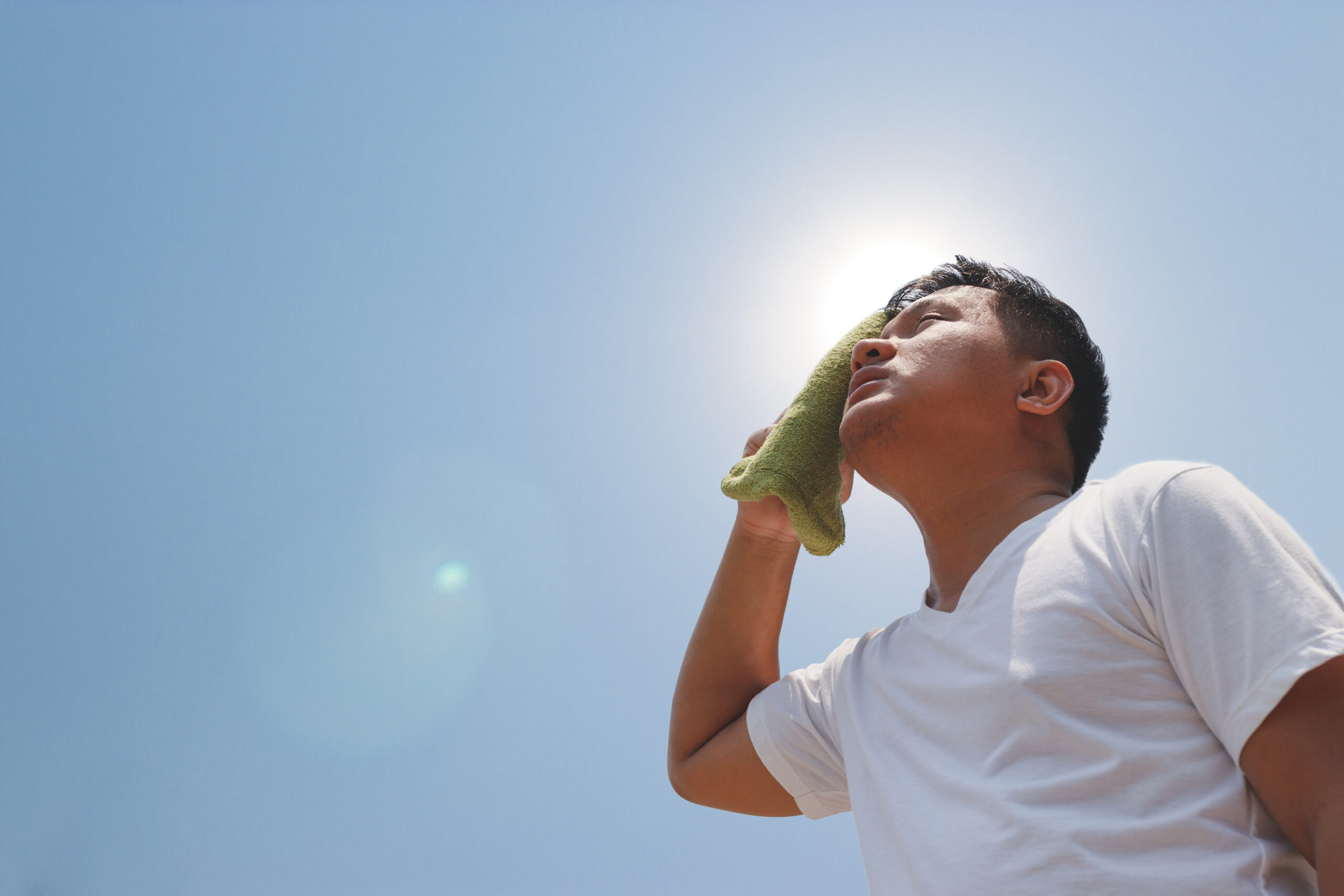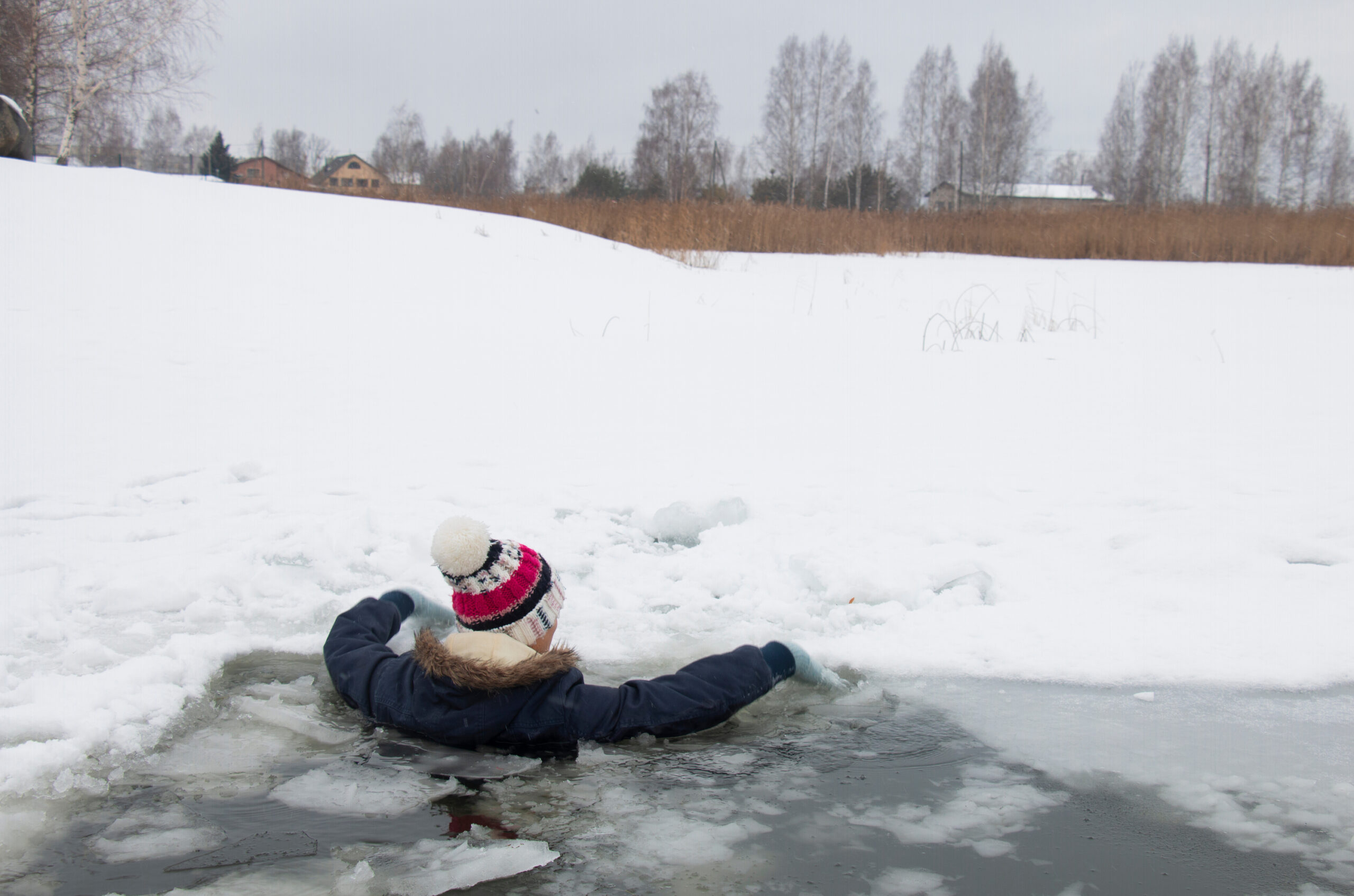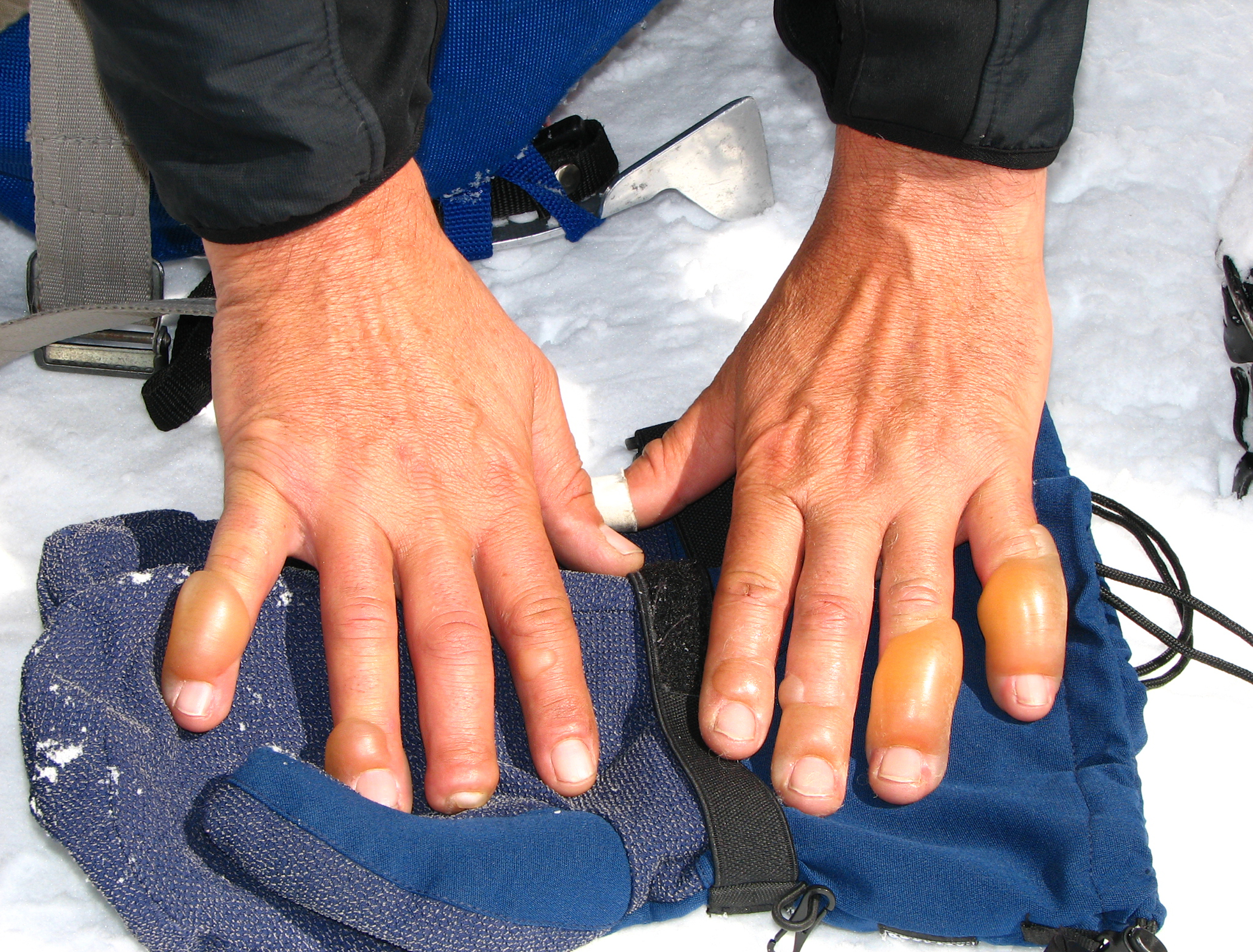Temperature-Related Injuries
Definitions
Hyperthermia
Hyperthermia, particularly heatstroke, is a condition in which a person’s body temperature becomes too hot, usually caused by extreme exertion, especially in hot, sunny, and humid weather. It can also be precipitated by not rehydrating enough.
Heatstroke can also occur in older people with other health problems or medications that have disrupted their ability to regulate body temperature. Older individuals must be treated with more caution in hot weather. Heatstroke is a medical emergency.
Heat cramps and heat exhaustion are milder forms of heat illness, but they can lead to heatstroke unless immediate attention is given to improve the situation.

Exercising intensely in hot weather can cause heatstroke.
Hypothermia
Hypothermia is a condition where the body’s temperature gets very cold and is unable to warm itself up independently. Hypothermia is a body temperature < 95°F or 35°C. Accidental hypothermia usually happens when the person is exposed to cold air or water for too long, and the most susceptible are young children or older individuals. When not treated promptly, hypothermia can cause serious medical problems or even death.

Hypothermia is a dangerous drop in body temperature.
Frostbite
Frostbite is an extreme form of hypothermia that results in damage to a particular body area from exposure to a cold environment. It commonly affects the ears, nose, cheeks, chin, fingers, and toes. The skin affected by frostbite may appear white, feel numb, or be hard to the touch.
Signs and Symptoms
Hyperthermia
A person with heatstroke will have a measured body temperature at or above 104°F or 40°C. This can affect the brain, causing confusion or trouble thinking clearly. The person can hallucinate or experience trouble walking. Some faint or have seizures.
When the first aid responder assists someone with heatstroke, they may find the person is breathing fast with tachycardia. The skin may appear reddish and feel warm to the touch. Some people with hyperthermia will have diarrhea or vomiting, muscle cramps or weakness, and headaches.
Hypothermia
People with hypothermia will have the following clinical presentations:
- Shivering, but if the body’s temperature regulatory system begins to malfunction due to prolonged exposure, the shivering will no longer be apparent.
- The person may appear to be clumsy.
- They may have trouble speaking and become confused.
- They will feel exhausted and breathe faster than usual, and may urinate more than usual.
- Because of an altered mental status, the person may be so confused that they might not realize they have hypothermia.
Frostbite
People with frostbite will have the following signs and symptoms:
- They will first experience numbness in the affected area.
- The affected area will feel cold and hard or waxy to the touch.
- If the affected area is a finger or toes, it will feel clumsy when moving it.
- Fluid or blood-filled blisters can also form.

Frostbitten Fingers
First Aid Interventions
Hyperthermia
Instructions for first responders when attending to a person with signs and symptoms of heatstroke are as follows:
- Move the person to a cool place, preferably to a room with air-conditioning.
- Dial 9-1-1 for emergency assistance.
- The patient should be cooled as quickly as possible by:
- Removing any restrictive clothing.
- Spraying them with cool water and placing them in front of a fan.
- Wrapping the person in an absorbent sheet, such as a towel drenched with cold water.
- Placing ice packs on the armpits and groin areas to reduce core body heat more rapidly.
- Having them drink cold fluids if they are conscious and coherent.
- Continue monitoring the patient’s body temperature with a thermometer. The goal is to cool the body temperature to 99.5°F (37.5°C).
- If the patient deteriorates further and loses consciousness after these first aid interventions, continue monitoring their breathing and heart rate. Be ready to deliver rescue breaths if they develop respiratory arrest or to provide high-quality CPR if they progress to cardiac arrest.
- Stay with the patient until EMS arrives.
Hypothermia
Responders should perform the following interventions for a person with hypothermia:
- Move the person to a room with a normal temperature as soon as possible.
- Remove cold and wet clothing and cover them with blankets.
- Give the patient warm beverages, but do not give alcohol.
- Get EMS care immediately by calling 9-1-1, especially if the patient shows moderate to severe symptoms such as:
- Confusion – not thinking clearly, not speaking clearly
- Fainting
- Difficulty breathing
At the hospital, a person with hypothermia will be treated with warm blankets or heating pads. They may be given a warm bath or placed in a room that blows warm air. Warmed fluids will be given intravenously.
Rewarming must be done gradually to prevent cardiac arrhythmias because, as the limbs warm, the cold blood from them will perfuse the heart. This may cause more harm to the patient. More aggressive rewarming techniques will be performed safely in the hospital setting.
Frostbite
The most critical issue when treating frostbite occurs when warming the affected body part. The first responder must ensure that the affected area will not freeze again, only to be rewarmed a second time, which would cause more harm to the tissues.
The following are instructions for first responder interventions for frostbite:
- Move the patient somewhere warm away from the cold exposure. Being inside a warm room will help.
- If the affected area is the fingers, have the person remove constricting jewelry such as rings or gloves if able.
- Let the patient warm the affected fingers under their armpits.
- If the affected area is the toes, have them remove constricting boots or shoes.
- Have the patient sit down and cover them as much as possible with blankets.
- The affected area should be moved as little as possible.
- The responder can help rewarm the affected limb by soaking the affected area for about 20 to 30 minutes in warm water heated to no higher than 104°F (40°C). The water temperature should also not be lower than the core body temperature. The limb can then be dried and wrapped with a sterile gauze pad.
- DO NOT REWARM UNDER A FLAME OR OTHER DRY HEAT. It tends to burn the skin because the patient does not feel anything from the affected area.
- DO NOT RUB THE AFFECTED LIMB; this can further damage the tissues.
- After the affected limb is wrapped in sterile gauze, it is recommended to elevate it and wait for EMS.